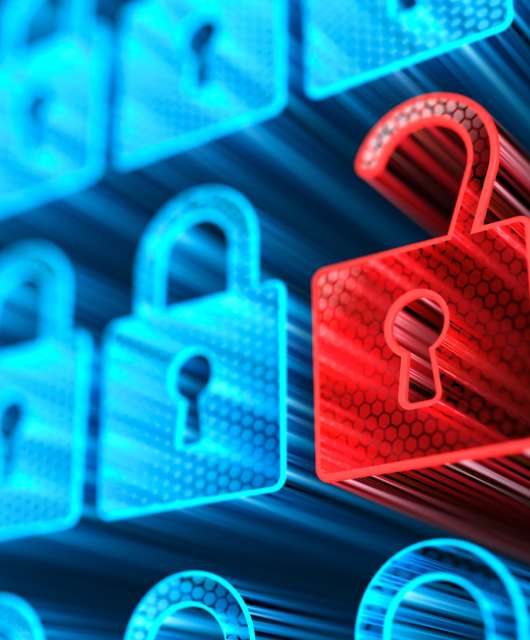In today’s digital era, online harassment has unfortunately become a common experience for many internet users. This harmful behavior can have a severe impact on mental health, personal safety, and overall online experience. Understanding the dos and don’ts of handling online harassment is critical for protecting oneself and maintaining a safe online presence. This article will provide comprehensive guidance on recognizing, addressing, and preventing online harassment.
Understanding Online Harassment
Online harassment encompasses a variety of abusive behaviors intended to intimidate, offend, or harm individuals. Common forms of harassment include cyberbullying, doxxing, trolling, cyberstalking, and other invasive activities that may threaten one’s privacy, reputation, or emotional well-being. While online harassment can affect anyone, some groups are disproportionately targeted, including women, minorities, public figures, and activists. Recognizing the nature and intent of harassment is the first step in addressing it effectively.
Why It’s Crucial to Respond Appropriately
The way one responds to online harassment can significantly impact both immediate and long-term outcomes. Ignoring some types of harassment might be effective, but in certain cases, action is necessary to prevent escalation. Missteps in handling harassment can inadvertently empower the harasser, making it essential to know what to do—and what to avoid—when confronted with online abuse.
Dos of Handling Online Harassment
1. Document the Harassment
One of the first steps to take when experiencing online harassment is to document each instance meticulously.
- Take Screenshots: Capturing evidence of each message, post, or comment is essential for establishing a record of abusive behavior.
- Save Emails and Messages: If harassment occurs via email or private messaging, save each interaction to create a digital trail.
- Record Dates and Times: Note when each instance of harassment occurs. This information can be valuable for reporting purposes.
Proper documentation serves as crucial evidence if you decide to report the harassment to social media platforms, employers, or law enforcement. In many cases, harassment can escalate, so having a timeline of interactions can provide a complete picture.
2. Report the Harassment to Platforms
Most major social media platforms, email providers, and online forums have systems in place to handle user-reported harassment.
- Use In-Platform Reporting Tools: Platforms like Facebook, Instagram, Twitter, and LinkedIn provide reporting functions for abusive behavior. Familiarize yourself with the process, as each platform may have specific steps.
- Flag Content Appropriately: When reporting, categorize the harassment accurately (e.g., hate speech, spam, impersonation).
- Follow Up if Necessary: If initial reports are not addressed, consider following up or utilizing other avenues, such as support centers or safety forums provided by the platform.
Proactively reporting harassment can prevent other users from facing the same issues and can lead to better safety measures across platforms.
3. Set Strong Privacy Settings
Adjusting privacy settings on social media and other online accounts can minimize the risk of harassment.
- Limit Public Access to Your Profile: Restrict who can view your posts, photos, and personal information.
- Restrict Comments and Messages: Many platforms allow users to control who can comment on posts or send direct messages.
- Enable Two-Factor Authentication: For added security, set up two-factor authentication to prevent unauthorized access to your accounts.
Enhanced privacy settings provide a protective layer, making it harder for potential harassers to access personal information or contact you directly.
4. Seek Support from Friends, Family, or Professionals
Dealing with harassment alone can be overwhelming. Reaching out to supportive networks can provide emotional relief and practical advice.
- Talk to Trusted Friends or Family Members: Sharing your experience with others can reduce feelings of isolation and provide new perspectives on how to handle the situation.
- Join Online Support Groups: Many online communities and support groups are available to those experiencing harassment, offering collective advice and solidarity.
- Consider Professional Help: If harassment leads to stress, anxiety, or depression, seeking guidance from a mental health professional can be beneficial.
A supportive network can provide both emotional support and actionable advice, helping individuals regain confidence in navigating their online spaces.
5. Know Your Legal Rights
Understanding your rights and legal options can empower you to take further action if necessary.
- Familiarize Yourself with Cyber Harassment Laws: Many countries have laws addressing cyberbullying, cyberstalking, and other forms of online harassment.
- Consult Legal Experts: In severe cases, consulting a lawyer who specializes in digital law can provide clarity on the best course of action.
- Consider Filing a Restraining Order: If harassment is ongoing and poses a threat to personal safety, a restraining order or protection order may be available.
Awareness of legal rights provides a sense of control, and taking legal action may be necessary to prevent further harassment.
Don’ts of Handling Online Harassment
1. Don’t Respond to Harassers Directly
Engaging with a harasser often exacerbates the problem by providing the attention they seek.
- Avoid Retaliating: Responding with anger or sarcasm may escalate the situation.
- Don’t Try to Reason with the Harasser: In most cases, online harassers are not open to rational discussion and may use responses to fuel further harassment.
- Avoid Public Confrontations: Public responses can draw unwanted attention and potentially encourage additional harassment.
Silence can often be a powerful response, indicating to the harasser that they are not affecting you emotionally or mentally.
2. Don’t Share Personal Information
Providing personal information, even unintentionally, can make you more vulnerable to online harassment.
- Avoid Sharing Details About Your Location: Avoid “checking in” on social media or sharing your current whereabouts.
- Protect Sensitive Information: Do not share your phone number, address, or personal email in public forums.
- Be Mindful of Digital Footprints: Even seemingly harmless posts can reveal information about your routines and habits.
Keeping personal information private minimizes the risk of doxxing and other forms of cyber harassment.
3. Don’t Ignore the Impact on Mental Health
Experiencing harassment can be emotionally taxing, and ignoring its effects can lead to negative mental health outcomes.
- Acknowledge Your Feelings: Harassment can lead to stress, anxiety, or even depression. Allow yourself to process these emotions.
- Take Breaks from Social Media: Limiting screen time or taking a social media hiatus can be restorative.
- Seek Professional Support if Needed: Don’t hesitate to reach out to mental health professionals if harassment affects your well-being.
Maintaining mental health is crucial to handling online harassment effectively and regaining control over your digital life.
4. Don’t Hesitate to Block and Report Harassers
If harassment is persistent, blocking and reporting the user is a proactive way to address the issue.
- Use Blocking Features: All major platforms have tools that allow you to block harassers from contacting you.
- Report Accounts if Necessary: For repeated offenses, consider reporting the account. Consistent reporting can lead to the account being flagged or suspended.
- Notify Others in Your Network: If someone within your social circle is also being targeted, alert them so they can take precautions.
Blocking and reporting are effective measures for maintaining a harassment-free online environment.
5. Don’t Downplay the Severity of the Situation
Many individuals dismiss harassment as “not a big deal,” but this mindset can lead to further harm.
- Recognize the Validity of Your Experience: Online harassment can have real-world impacts. Taking it seriously is essential.
- Take Action Early: Addressing harassment early can prevent escalation and protect both you and others.
- Trust Your Instincts: If a situation feels threatening, take appropriate precautions without second-guessing yourself.
Acknowledging harassment’s seriousness ensures a proactive response and underscores the importance of online safety.
Final Thoughts on Handling Online Harassment
Online harassment is a complex issue, but by following these dos and don’ts, individuals can take steps to protect themselves and reduce the negative impact of abusive behavior. Documenting incidents, reporting harassment, maintaining privacy, seeking support, and understanding legal rights are essential steps for addressing and mitigating online harassment effectively.
For anyone facing online abuse, it’s important to know that help is available, and no one needs to handle harassment alone. Taking decisive actions early can make a significant difference, creating a safer and more respectful online space for everyone.







